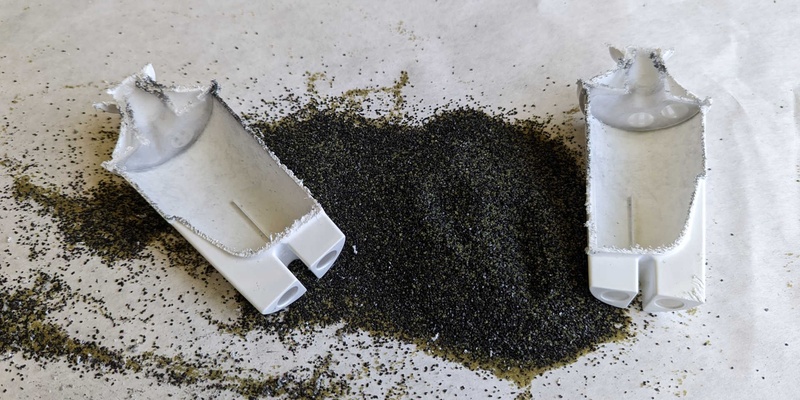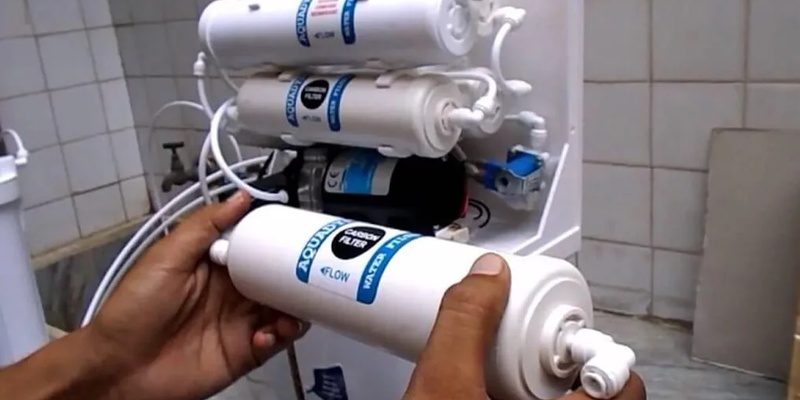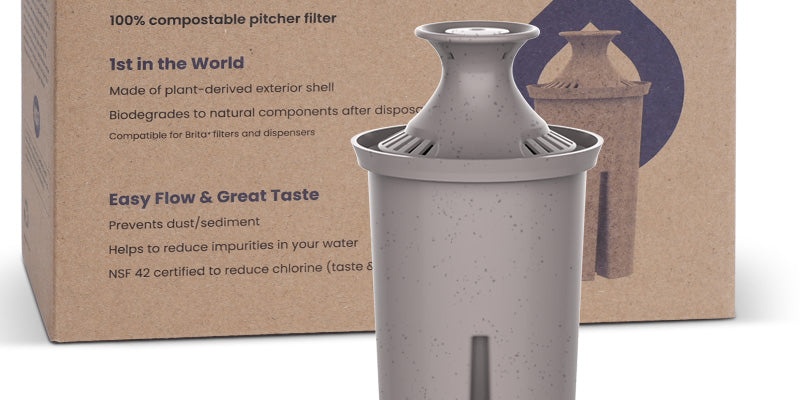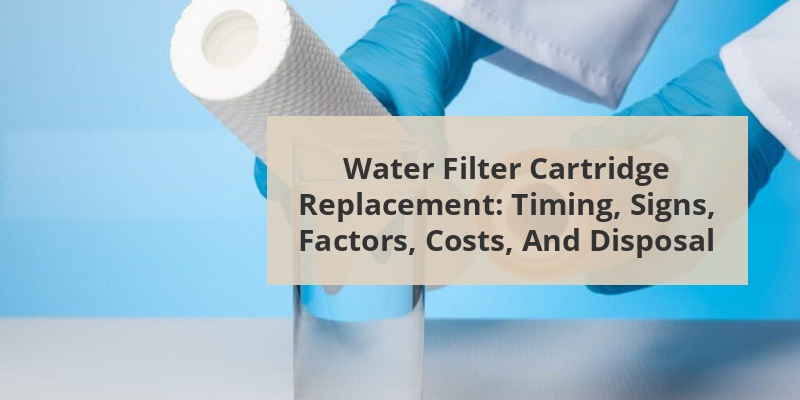Knowing when to replace your water filter cartridge is essential for maintaining clean, safe drinking water in your home. Most manufacturers recommend replacing filter cartridges every 2-6 months, but the actual timeline varies based on filter type, water quality, and usage patterns. Without timely replacement, filters can become breeding grounds for bacteria, lose filtration effectiveness, and potentially release trapped contaminants back into your water. Understanding your specific filter’s replacement schedule is crucial for optimal performance and protection against contaminants.
Different water filtration systems have varying replacement schedules. While manufacturer recommendations provide a starting point, your actual replacement frequency may differ based on your household’s specific conditions. Here’s a comprehensive overview of common filter types and their typical replacement intervals:
| Filter Type | Replacement Frequency | Capacity (Gallons) |
|---|---|---|
| Pitcher Filters | Every 2-3 months | 40-120 |
| Refrigerator Filters | Every 6 months | 200-300 |
| Under-sink Filters | Every 6-12 months | 500-1,000 |
| Whole House Sediment Filters | Every 3-6 months | 15,000-100,000 |
| Whole House Carbon Filters | Every 6-12 months | 100,000-150,000 |
| Reverse Osmosis Membranes | Every 2-3 years | 1,500-2,000 |
| RO Pre/Post Filters | Every 6-12 months | 500-1,000 |
Content Navigation
- Brand-Specific Replacement Guidelines
- Signs Your Water Filter Needs Replacement
- Factors That Affect Filter Cartridge Lifespan
- How to Track Filter Replacement Timing
- Filter Replacement Process
- Consequences of Delayed Filter Replacement
- Cost Considerations for Filter Replacement
- Environmentally Friendly Filter Disposal
Brand-Specific Replacement Guidelines
Major water filter manufacturers often have specific recommendations for their products. Following these guidelines helps ensure optimal performance of your filtration system. Here are recommendations from some popular brands:
- Brita: Standard pitcher filters typically last 40 gallons (about 2 months), while Longlast+ filters can go up to 120 gallons (about 6 months)
- PUR: Basic filters last for about 40 gallons (2 months), while Lead Reduction filters handle about 30 gallons
- Whirlpool: Refrigerator filters should be replaced every 6 months or 200-300 gallons
- GE: Recommends replacing refrigerator filters every 6 months regardless of usage
- Culligan: Under-sink filters typically need replacement every 6-12 months depending on water quality and usage
Signs Your Water Filter Needs Replacement

Even if you’re tracking the time or gallons used, your filter might need replacing earlier than scheduled. Watch for these telltale signs that indicate your filter cartridge has reached the end of its useful life:
- Noticeable change in water taste or odor – If your water suddenly tastes or smells different, your filter may be saturated
- Slow water flow – A significant decrease in water pressure often indicates a clogged filter
- Visible particles in water – Sediment or floating particles suggest the filter is no longer effective
- Change in water color – Discoloration can indicate filter failure or breakthrough of contaminants
- Filter monitoring indicator – Many modern systems have electronic indicators that signal when replacement is needed
- Unusual noises – Gurgling or hissing sounds might indicate air in the system due to filter problems
Factors That Affect Filter Cartridge Lifespan
Several variables can significantly impact how frequently you’ll need to replace your water filter cartridges. Understanding these factors helps in planning an appropriate replacement schedule for your specific situation:
Water Quality Factors
The condition of your source water directly affects filter longevity. Higher contaminant levels force filters to work harder and become saturated more quickly. Well water typically contains more sediment and minerals than municipal water, potentially requiring more frequent replacements.
Call 888-896-7031 for Free Local HVAC Quotes – Compare and Save Today!
Usage Patterns
Water consumption patterns dramatically impact filter life. A household of six will reach the gallon capacity of a filter much faster than a single-person household. Similarly, if you use filtered water for cooking, pets, plants, and drinking, you’ll need more frequent replacements than someone who uses it only for drinking.
Water Hardness
Areas with hard water (high mineral content) will experience faster filter clogging. Calcium and magnesium deposits accumulate on filter media, reducing effectiveness and flow rates. In regions with water hardness above 7 grains per gallon, you might need to replace filters up to twice as often.
How to Track Filter Replacement Timing
Keeping track of when to change your filter cartridges doesn’t have to be complicated. Here are several effective methods to ensure timely replacements:
- Calendar reminders – Set recurring alerts on your phone or computer calendar
- Water usage tracking – Some advanced systems monitor gallons filtered
- Filter subscription services – Many manufacturers offer automatic delivery programs
- Filter indicator lights – Follow the electronic indicators built into many modern systems
- Replacement stickers – Place dated stickers on your filter housing or refrigerator
- Mobile apps – Several apps can help track multiple filters throughout your home
Filter Replacement Process

Replacing most water filter cartridges is a straightforward process that generally follows these steps:
- Prepare the area – Turn off water supply to the filter system and release pressure
- Remove the old cartridge – Open the housing and carefully extract the used filter
- Clean the housing – Wipe down the interior with a mild soap solution and rinse thoroughly
- Install the new cartridge – Insert the replacement filter, ensuring proper orientation
- Reassemble the system – Close and secure the housing, checking for proper seal
- Flush the system – Run water through the new filter for 5-10 minutes to remove manufacturing residues
Always consult your specific filter model’s manual, as some systems require additional steps or have unique requirements. Many manufacturers provide helpful video tutorials on their websites for visual guidance.
Consequences of Delayed Filter Replacement
Postponing filter replacement beyond recommended intervals can lead to several undesirable outcomes. Understanding these consequences may help prioritize timely maintenance:
Call 888-896-7031 for Free Local HVAC Quotes – Compare and Save Today!
- Bacterial growth – Expired filters can become breeding grounds for bacteria and other microorganisms
- Reduced filtration efficiency – Over-saturated filters lose their ability to capture contaminants
- Contaminant release – Some filters may actually release trapped pollutants back into water
- System damage – Clogged filters can strain pumps and other components, leading to costly repairs
- Higher energy consumption – Systems must work harder to push water through clogged filters
Cost Considerations for Filter Replacement
The expense of regular filter replacements should be factored into your household budget. Prices vary considerably based on filter type and quality:
| Filter Type | Average Cost per Replacement | Annual Cost (Estimated) |
|---|---|---|
| Pitcher Filters | $5-15 | $30-90 |
| Refrigerator Filters | $25-50 | $50-100 |
| Under-sink Basic Filters | $15-40 | $30-80 |
| RO Membrane | $75-150 | $25-75 (amortized) |
| Whole House Filter Set | $50-150 | $100-300 |
Consider purchasing multi-packs or subscribing to automatic delivery services to reduce the per-unit cost. While quality filters may cost more initially, they often provide better filtration and more reliable performance, making them a better value in the long run.
Environmentally Friendly Filter Disposal

Used water filters require proper disposal to minimize environmental impact. Different filter types have varying disposal protocols:
- Recycling programs – Some manufacturers like Brita partner with TerraCycle to recycle used filters
- Disassembly – Certain filters can be taken apart, with some components being recyclable
- Filter media repurposing – Activated carbon from some filters can be used in garden soil
- Local hazardous waste – Filters that have removed significant contaminants may need special handling
Check with your filter manufacturer for specific recycling programs or recommendations. Some companies provide prepaid shipping labels for returning used filters for proper recycling, helping reduce landfill waste while recovering valuable materials.
Tips for Getting the Best HVAC Prices
- Prioritize Quality Over Cost
The most critical factor in any HVAC project is the quality of the installation. Don’t compromise on contractor expertise just to save money. - Check for Rebates
Always research current rebates and incentives — they can significantly reduce your overall cost. - Compare Multiple Quotes
Request at least three estimates before making your choice. You can click here to get three free quotes from local professionals. These quotes include available rebates and tax credits and automatically exclude unqualified contractors. - Negotiate Smartly
Once you've chosen a contractor, use the proven strategies from our guide — How Homeowners Can Negotiate with HVAC Dealers — to get the best possible final price.

